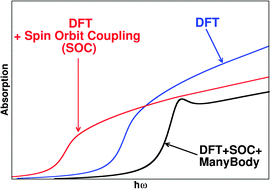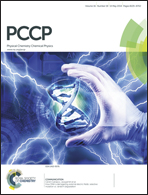Comment on “Density functional theory analysis of structural and electronic properties of orthorhombic perovskite CH3NH3PbI3” by Y. Wang et al., Phys. Chem. Chem. Phys., 2014, 16, 1424–1429
Abstract
Yun Wang et al. used density functional theory (DFT) to investigate the orthorhombic phase of CH3NH3PbI3, which has recently shown outstanding properties for photovoltaic applications. Whereas their analysis of ground state properties may represent a valuable contribution to understanding this class of materials, effects of spin–orbit coupling (SOC) cannot be overlooked as was shown in earlier studies. Moreover, their discussion on optical properties may be misleading for non-DFT-experts, and the nice agreement between experimental and calculated band gap is fortuitous, stemming from error cancellations between SOC and many-body effects. Lastly, Bader charges suggest potential problems during crystal structure optimization.


 Please wait while we load your content...
Please wait while we load your content...